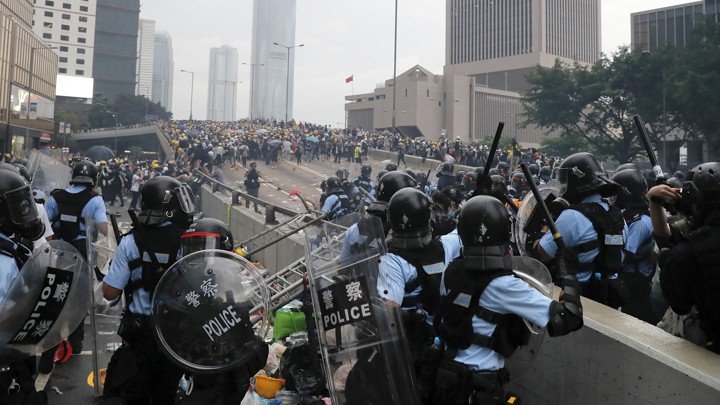Mass protests take place in Hong Kong. It already became their identity
 foto: PUBLIKA.MD
foto: PUBLIKA.MD
In Hong Kong, people have most of the freedoms of a democracy except the right to choose their leaders. The city’s last British governor, Chris Patten, described it as a place that enjoyed “liberty without democracy”, writes theguardian.com.
That has made protests particularly important as a political tool and an expression of Hong Kong identity. For more than half a century, the people
This week’s mass demonstrations, over plans for a new extradition law that would allow suspects to be sent to mainland China for trial, is part of that long tradition. And many say they are demonstrating precisely to protect it.
“If this bill passes, we won’t have the right to protest any more. It’s a key part of Hong Kong culture,” said Jason Fong, 19, who has joined the demonstrations with his high school friends.
According to Antony Dapiran, author of City of Protest, a history of dissent in the territory, the first major demonstrations in modern Hong Kong came in 1966 and 1967. People took to the streets initially over a planned hike to the price of ferry tickets between Hong Kong island and the mainland, but “theStar Ferry riots” led to broader protests about labour rights and living conditions.
In 1967, more demonstrations turned violent on both sides, with protesters using homemade bombs and the police harsh crowd-control tactics. Dozens were killed in the worst protest bloodshed the city has ever seen, but the demonstrations had a huge impact on the lives of ordinary Hong Kong residents.
“The colonial administration of the time realised they had to start paying more attention to the welfare of the local population,” Dapiran said. “It instituted various reforms including housing, compulsory education and labour rights.”
In the 1970s, protests against a corrupt police chief brought government action on graft. At the end of the 1980s, the Chinese government’s brutal crackdown on protesters in Tiananmen Square made Hong Kong’s right to protest seem even more important.
Memorial gatherings each year still draw large crowds, particularly for milestones such as this year’s 30th anniversary. “It’s the only place in China territory where it is commemorated on a large scale, and that in itself is interesting and important,” Dapiran said.
“Originally the reason for the [demonstration] was to protest for democracy in China. Now it is more to commemorate and bear witness, and as an expression of Hong Kong identity, that we as Hong Kongers are different and going to exercise this right.”
After Hong Kong was handed back to Chinese rule in 1997, with promises that it would be self-governing under a mechanism known as “one country, two systems”, protests have increasingly focused on protecting Hong Kong’s rights and freedoms
of Hong Kong have been taking to the streets to force distant authorities – first in Britain and later in Beijing – to reconsider how they govern the city.